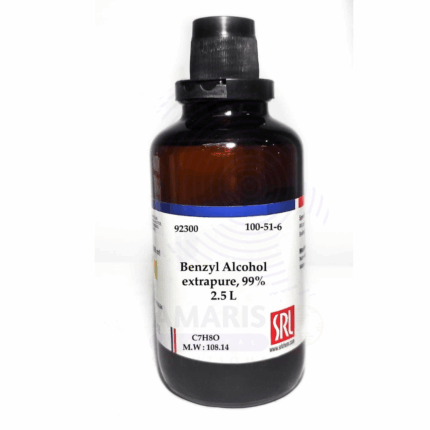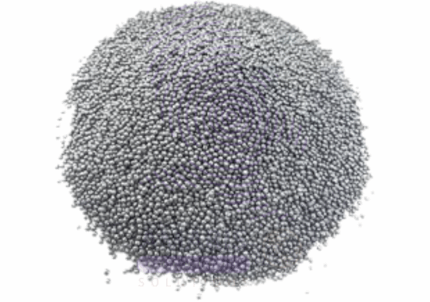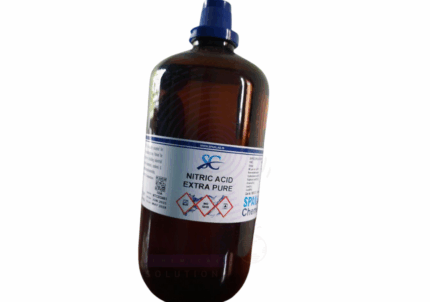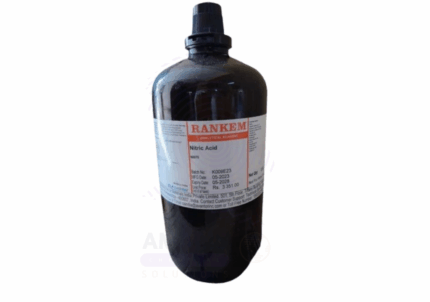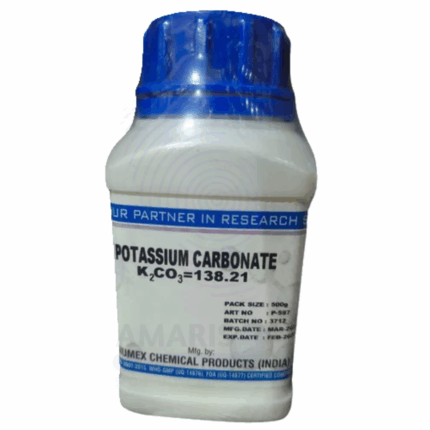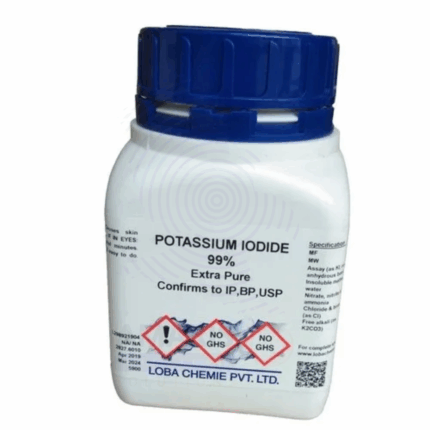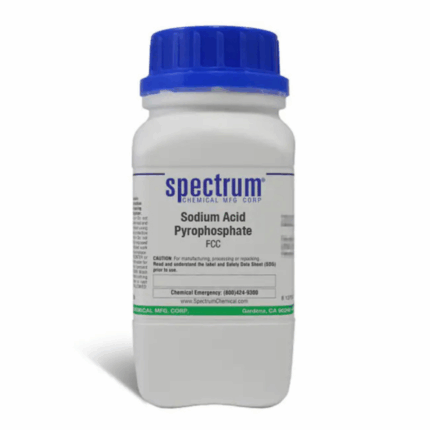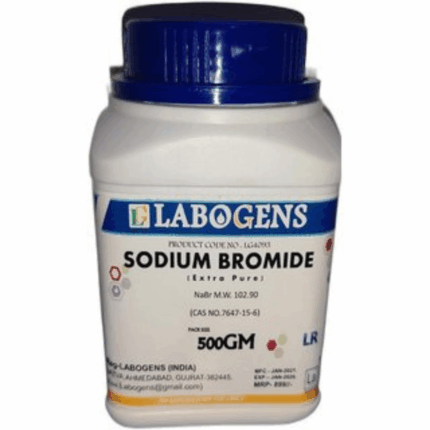
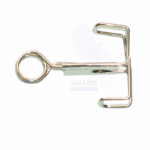
Octyl Methoxycinnamate Extra Pure
$ 24.00 Original price was: $ 24.00.$ 23.12Current price is: $ 23.12.
Octyl Methoxycinnamate Extra Pure is a high-purity organic compound widely used as a UV-B filter in sunscreen formulations and personal care products. Known chemically as Ethylhexyl Methoxycinnamate, it functions by absorbing ultraviolet light in the 280–320 nm range, thereby protecting skin from sunburn and photoaging.
In its Extra Pure form, OMC offers exceptional quality for cosmetic-grade applications, pharmaceutical formulations, and research requiring stringent purity levels. It is typically a clear, oily liquid with good solubility in oils and alcohols, making it ideal for incorporation into emulsions, creams, and lotions. Aside from its cosmetic uses, it is occasionally used in plastic and polymer stabilization where UV protection is needed. It should be stored in cool, dark conditions to maintain its stability and efficacy.
Octyl Methoxycinnamate Extra Pure
Primary Uses
- Ultraviolet-B (UV-B) Filter in Sunscreen Formulations
- Serves as a primary organic UV filter to absorb harmful UV-B radiation (290-320 nm), thereby preventing sunburn and protecting skin from DNA damage. It is a foundational ingredient in most commercial sunscreens, lotions, and daily wear cosmetics with SPF.
- Photostabilizer in Multi-Filter Sun Care Products
- Used to enhance the photostability of other, less stable UV filters (particularly avobenzone, a UV-A filter) in broad-spectrum formulations. By absorbing excess energy, it helps prevent the rapid degradation of other actives, maintaining the product’s Sun Protection Factor (SPF) over time.
- UV Absorber in Cosmetic and Personal Care Products
- Incorporated into a wide range of cosmetic products beyond sunscreens, including foundations, BB creams, lip balms, and moisturizers, to provide daily protection against UV-induced skin aging and pigmentation.
- Key Ingredient in After-Sun and Skincare Products
- Used in after-sun lotions and moisturizing creams designed for sun-exposed skin, where its protective function is combined with soothing and hydrating agents to aid skin recovery.
Secondary Uses
- UV Stabilizer in Polymer and Coating Industries
- Added to plastics, varnishes, paints, and packaging materials (e.g., for cosmetics or food) to prevent UV-induced degradation. It protects polymers from yellowing, embrittlement, and loss of mechanical properties caused by prolonged sunlight exposure.
- Reference Standard in Analytical Chemistry
- Used as a high-purity standard in Quality Control (QC) laboratories for the quantitative analysis of sunscreen products via techniques like High-Performance Liquid Chromatography (HPLC) to verify concentration, purity, and stability.
- Research Compound in Photochemistry and Dermatology
- Studied in in vitroand ex vivo research to understand its interaction with UV light, its penetration kinetics into the skin, and its overall efficacy and safety profile as a topically applied chemical.
- Additive in Industrial Adhesives and Sealants
- Incorporated into light-sensitive adhesives and sealants to prevent curing or degradation during storage and application, ensuring product performance and longevity when used in outdoor or well-lit environments.
KEY ATTRIBUTES
1. Basic Identification Attributes
- Chemical Name: Octyl Methoxycinnamate
- CAS Number: 5466-77-3
- HS Code: 2916.39.90
- Molecular Formula: C₁₈H₂₆O₃
- Synonyms:
- Ethylhexyl methoxycinnamate
- 2-Ethylhexyl 4-methoxycinnamate
- OMC
- Octinoxate
2. Physical & Chemical Properties
- Physical State: Liquid (oil-like consistency)
- Color & Odor: Clear, colorless to pale yellow; mild characteristic odor
- Boiling Point: ~198 °C at 2 mmHg
- Melting Point: < -25 °C
- Density: ~1.01 g/cm³ at 25 °C
- Solubility:
- Insoluble in water
- Soluble in alcohols, oils, and organic solvents
- pH Level: Not applicable (neutral, non-aqueous)
- Vapor Pressure: Very low (~0.02 mmHg at 25 °C)
- Flash Point: ~198 °C (closed cup)
- Autoignition Temperature: ~420 °C
- Viscosity: Moderate (depends on temperature; typically 70–80 cP at 25 °C)
3. Safety & Hazard Attributes
- Hazard Class (GHS Classification):
- Eye irritation (Category 2B)
- Skin sensitization (Category 1; for some individuals)
- NFPA Ratings:
- Health: 1
- Flammability: 1
- Reactivity: 0
- Exposure Limits: Not established (generally considered safe in cosmetic use under regulated limits)
- Reactivity: Stable under normal conditions; avoid strong oxidizing agents
4. Storage & Handling Attributes
- Storage Conditions:
- Store in tightly sealed containers in a cool, dry, well-ventilated area
- Protect from light and heat to maintain stability
- Incompatible Materials: Strong oxidizers
- Container Type: Dark glass or UV-protected HDPE bottles
- Shelf Life & Expiration Date: Typically 2–3 years if stored properly
- Special Handling Requirements:
- Use protective gloves and goggles
- Minimize skin contact
5. Regulatory & Compliance Attributes
- Regulatory Status:
- Approved for use in cosmetics and sunscreens by FDA (U.S.), EU, and other regulatory bodies (max concentrations vary by region)
- Listed on TSCA and REACH inventories
- Transportation Restrictions:
- Not regulated as hazardous material for transport
- Waste Disposal Method:
- Dispose of according to local environmental regulations; avoid release into drains or watercourses
6. Environmental & Health Impact
- Ecotoxicity:
- May cause long-term adverse effects in aquatic environments (classified as marine pollutant in some studies)
- Persistence in Environment: Moderate; not readily biodegradable
- Carcinogenicity/Mutagenicity:
- Not classified as carcinogenic
- Some concerns over endocrine disruption at high concentrations; under review in some regions
- Biodegradability: Slowly biodegradable under aerobic conditions
SAFETY PRECAUTIONS
Personal Protective Equipment (PPE):
- Wear a lab coat, nitrile gloves, and chemical safety goggles.
- Use a dust mask or work in a well-ventilated area or fume hood.
Handling:
- Avoid contact with skin and eyes.
- Prevent inhalation of vapors or dust.
- Wash hands thoroughly after handling.
- Do not eat, drink, or smoke while handling this product.
Storage:
- Store in a tightly closed container in a cool, dry, and well-ventilated area.
- Keep away from heat sources, strong oxidizers, and direct sunlight.
- Protect from moisture and contamination.
FIRST AID MEASURES
Inhalation:
- Move the affected person to fresh air.
- Seek medical advice if respiratory symptoms persist.
Skin Contact:
- Wash skin with soap and plenty of water.
- Remove contaminated clothing.
- Seek medical attention if irritation develops.
Eye Contact:
- Rinse cautiously with water for several minutes.
- Remove contact lenses if present and easy to do.
- Continue rinsing and seek medical attention if irritation persists.
Ingestion:
- Rinse mouth with water.
- Do not induce vomiting.
- Seek immediate medical advice.
FIRE FIGHTING MEASURES
Flammability:
- May be combustible at high temperatures.
- Avoid exposure to open flames and hot surfaces.
Extinguishing Media:
- Use dry chemicals, foam, carbon dioxide (CO₂), or water spray.
- Do not use water jets directly on burning products.
Hazardous Combustion Products:
- May emit carbon monoxide (CO) and carbon dioxide (CO₂) upon decomposition.
Firefighter Protection:
- Wear self-contained breathing apparatus (SCBA) and full protective clothing.


 Preservatives(food)
Preservatives(food) Flavor Enhancers
Flavor Enhancers Acidulants
Acidulants Sweeteners
Sweeteners Antioxidants
Antioxidants Colorants(food)
Colorants(food) Nutraceutical Ingredients (food)
Nutraceutical Ingredients (food) Nutrient Supplements
Nutrient Supplements Emulsifiers
Emulsifiers
 Collectors
Collectors Dust Suppressants
Dust Suppressants Explosives and Blasting Agents
Explosives and Blasting Agents Flocculants and Coagulants
Flocculants and Coagulants Frothers
Frothers Leaching Agents
Leaching Agents pH Modifiers
pH Modifiers Precious Metal Extraction Agents
Precious Metal Extraction Agents
 Antioxidants(plastic)
Antioxidants(plastic) Colorants (Pigments, Dyes)
Colorants (Pigments, Dyes) Fillers and Reinforcements
Fillers and Reinforcements Flame Retardants
Flame Retardants Monomers
Monomers Plasticizers
Plasticizers Polymerization Initiators
Polymerization Initiators Stabilizers (UV, Heat)
Stabilizers (UV, Heat)
 Antifoaming Agents
Antifoaming Agents Chelating Agents
Chelating Agents Coagulants and Flocculants
Coagulants and Flocculants Corrosion Inhibitors
Corrosion Inhibitors Disinfectants and Biocides
Disinfectants and Biocides Oxidizing Agents
Oxidizing Agents pH Adjusters
pH Adjusters Scale Inhibitors( water)
Scale Inhibitors( water)
 Antioxidants(cosmetic)
Antioxidants(cosmetic) Emollients
Emollients Fragrances and Essential Oils
Fragrances and Essential Oils Humectants
Humectants Preservatives
Preservatives Surfactants(cosmetic)
Surfactants(cosmetic) Thickeners
Thickeners UV Filters
UV Filters
 Fertilizers
Fertilizers Soil Conditioners
Soil Conditioners Plant Growth Regulators
Plant Growth Regulators Animal Feed Additives
Animal Feed Additives Biostimulants
Biostimulants Pesticides (Herbicides, Insecticides, Fungicides)
Pesticides (Herbicides, Insecticides, Fungicides)
 Active Pharmaceutical Ingredients (APIs)
Active Pharmaceutical Ingredients (APIs) Excipients
Excipients Solvents(pharmaceutical)
Solvents(pharmaceutical) Antibiotics
Antibiotics Antiseptics and Disinfectants
Antiseptics and Disinfectants Vaccine Adjuvants
Vaccine Adjuvants Nutraceutical Ingredients (pharmaceutical)
Nutraceutical Ingredients (pharmaceutical) Analgesics & Antipyretics
Analgesics & Antipyretics
 Analytical Reagents
Analytical Reagents Solvents(lab)
Solvents(lab) Chromatography Chemicals
Chromatography Chemicals Spectroscopy Reagents
Spectroscopy Reagents microbiology-and-cell-culture-reagents
microbiology-and-cell-culture-reagents Molecular Biology Reagents
Molecular Biology Reagents Biochemical Reagents
Biochemical Reagents Inorganic and Organic Standards
Inorganic and Organic Standards Laboratory Safety Chemicals
Laboratory Safety Chemicals Specialty Laboratory Chemicals(Special Laboratory Equipment)
Specialty Laboratory Chemicals(Special Laboratory Equipment)
 Demulsifiers
Demulsifiers Hydraulic Fracturing Fluids
Hydraulic Fracturing Fluids Scale Inhibitors(oil)
Scale Inhibitors(oil) Surfactants(oil)
Surfactants(oil) Drilling Fluids
Drilling Fluids
 Dyes and Pigments
Dyes and Pigments Bleaching Agents
Bleaching Agents Softening Agents
Softening Agents Finishing Agents
Finishing Agents Antistatic Agents
Antistatic Agents
 Admixtures
Admixtures Waterproofing Agents
Waterproofing Agents Sealants and Adhesives
Sealants and Adhesives Curing Compounds
Curing Compounds Concrete Repair Chemicals
Concrete Repair Chemicals Anti-Corrosion Coatings
Anti-Corrosion Coatings
 Surfactants(cleaning)
Surfactants(cleaning) Builders
Builders Enzymes
Enzymes Solvents (Cleaning)
Solvents (Cleaning) Fragrances
Fragrances
 Electronic Chemicals
Electronic Chemicals Catalysts
Catalysts Lubricants
Lubricants Photographic Chemicals
Photographic Chemicals Refrigerants
Refrigerants Automotive chemicals
Automotive chemicals Pyrotechnic Chemicals
Pyrotechnic Chemicals
 Biodegradable Surfactants
Biodegradable Surfactants Bio-based Solvents
Bio-based Solvents Renewable Polymers
Renewable Polymers Carbon Capture Chemicals
Carbon Capture Chemicals Wastewater Treatment Chemicals
Wastewater Treatment Chemicals
 Pigments
Pigments Solvents(paint)
Solvents(paint) Specialty Coatings
Specialty Coatings Binders/Resins
Binders/Resins Additives
Additives Driers
Driers Anti-Corrosion Agents
Anti-Corrosion Agents Functional Coatings
Functional Coatings Application-Specific Coatings
Application-Specific Coatings
 Fresh Herbs
Fresh Herbs Ground Spices
Ground Spices Whole Spices
Whole Spices Spice Blends
Spice Blends Dried Herbs
Dried Herbs
 Leavening Agents
Leavening Agents Dough Conditioners
Dough Conditioners Flour Treatments
Flour Treatments Fat Replacers
Fat Replacers Decoratives
Decoratives Preservatives(baking)
Preservatives(baking)
 Plasticizers & Softeners
Plasticizers & Softeners Reinforcing Agents
Reinforcing Agents Adhesion Promoters
Adhesion Promoters Vulcanizing Agents
Vulcanizing Agents Antidegradants
Antidegradants Blowing Agents
Blowing Agents Fillers & Extenders
Fillers & Extenders Accelerators & Retarders
Accelerators & Retarders

